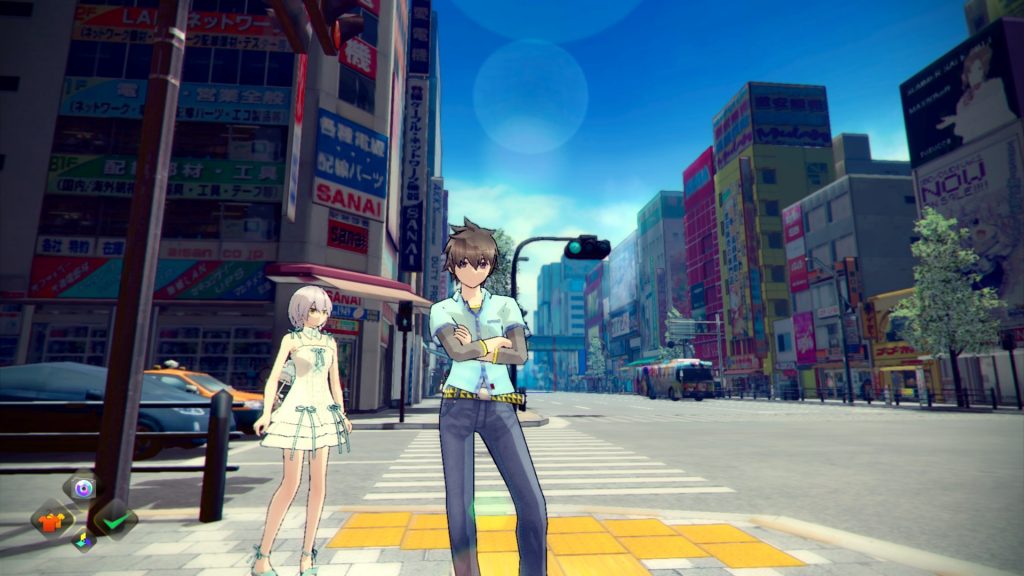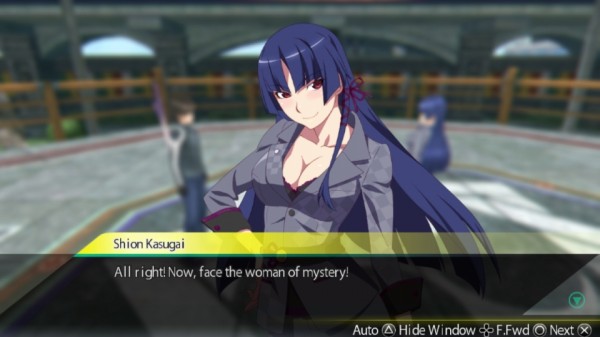I’ve long been fascinated by Japan, by its general culture and history alongside specific areas such as the country’s mythology and feudal era, not to mention more contemporary elements such as Japanese cinema and videogames.
The Japan-set, cloying, inane, unpolished mess that is Akiba’s Trip: Undead & Undressed didn’t manage to strangle that fascination, although it had a damn good go.
Developed by Acquire and published (in Europe, at least) by NIS America, Akiba’s Trip: Undead & Undressed is… well, it tries to be a number of things. It’s a beat-‘em-up, an action-RPG, a visual novel and a dating sim all wrapped up in an anime style, although it doesn’t manage to pull off any of these genres with much success.
Set in the Akihabara commercial district in Tokyo, the game provides a perfunctory plot so as to offer a narrative backbone – no matter how flimsy – to its focal gameplay mechanic, which is the defeating of opponents in combat via the stripping of their clothes. Apparently there are undead but human-looking beings named “synthisters” prowling the streets of Akihabara and feeding on the energy and willpower of the people who inhabit the district and these synthisters can only be killed by having their clothes removed and their bodies exposed to sunlight and my God I’ve become dumber just typing all that. You play as an otaku (someone with an obsessive interest in anime, manga, pop music, etc.) who becomes tangled up with both the synthisters and a group of people who want to stop the undead energy-suckers.
The game begins with a lengthy dialogue scene – these scenes usually involving both 3D character models and 2D drawings – and it was one I had to sit through twice, as during my first attempt, my several dialogue choices led to a “Game Over” screen before I even had a chance to play anything else of the game. Still, this introduction at least lets you know what to expect right off the bat, as tedious, overly long cut-scenes crop up all too frequently throughout the game.
Such scenes aren’t helped by the largely annoying supporting cast, by far the worst offender being the protagonist’s younger sister, who is “nails on a chalkboard” annoying. If you don’t mind arrogant, ungrateful teenagers who insist on using grating non-words such as “brotector” and “brotagonist” then that’s your call, but as for me, I just wanted to put her head through the nearest window every time she opened her mouth. But more often than not, you’re not even given the option of responding to an annoying character in any kind of hostile way – instead, you just have three variations on taking their shit without any real complaint, so it’s not even the illusion of choice.
So the plot, characters and writing in general didn’t win me over, but there remained a ray of hope: I’ve been a huge fan of the beat-‘em-up genre since the 1980s, so maybe the brawling action would salvage Akiba’s Trip for me? Sadly, the reality hit me like a giant kebab in the face (note: Akiba’s Trip allows you to hit enemies in the face with a giant kebab), because it turned out that the game’s combat is unresponsive, basic and clunky.
As explained above, the key to defeating your synthister opponents is to violently remove their clothes during battle, but you can only do this by softening them up with a beating first. You can choose to attack the lower body, the central body or the head, and when you’ve done enough damage, you can remove the item of clothing from that area, whether it’s a hat or bow, skirt or trousers, T-shirt or blouse (you fight both genders in Akiba’s Trip – it’s not sexist, just terrible), etc. Due to the protagonist being part-synthister, you also have to be wary of being beaten and stripped yourself.
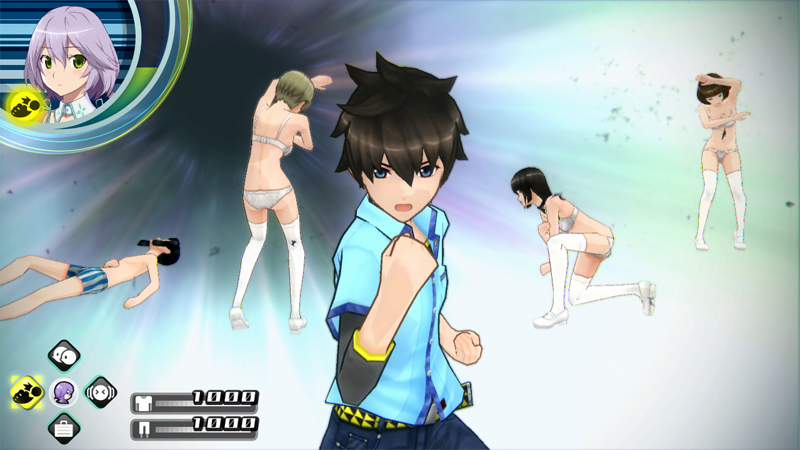
You might think that having to prioritise different parts of an opponent’s body, not to mention the wide variety of weapons on offer, might add some strategy or depth to the combat but sadly this isn’t the case, and the fighting sections end up being almost as tiresome as the dialogue sections. If you’re determined to try to get the most out of the combat system then there is an arena where you can go to practice, although sometimes you’ll also find yourself randomly accosted in the street and ending up in a fight. During these fights it can be far too easy for random passersby to become involved, leading to you inadvertently becoming outnumbered.
The structure of Akiba’s Trip is often repetitive as you sit through a dialogue section at the “gaming bar” where the protagonist and his comrades are based, then you head to a marked location on the map for a fight, then it’s back to the bar for more dialogue, and so on. To be fair, though, this is primarily the case when playing the main missions, as between these missions you’re free to wander the streets of Akihabara – alone or with an AI companion – to see what else the game-world has to offer.
Side-quests are unlocked as you progress through the game and you can complete them to earn rewards, although I didn’t find any of the side-quests I played to be any more interesting than the main missions. I did at least enjoy one side-quest in which a guy asked me to help him confess his love to a girl, only for me to sabotage the whole thing by convincing him to dress like an idiot and tell the girl that his mother had always hated her and that they should never see each other again, which resulted in the girl calling him a douchebag and running off. Not quite Cyrano de Bergerac, then.
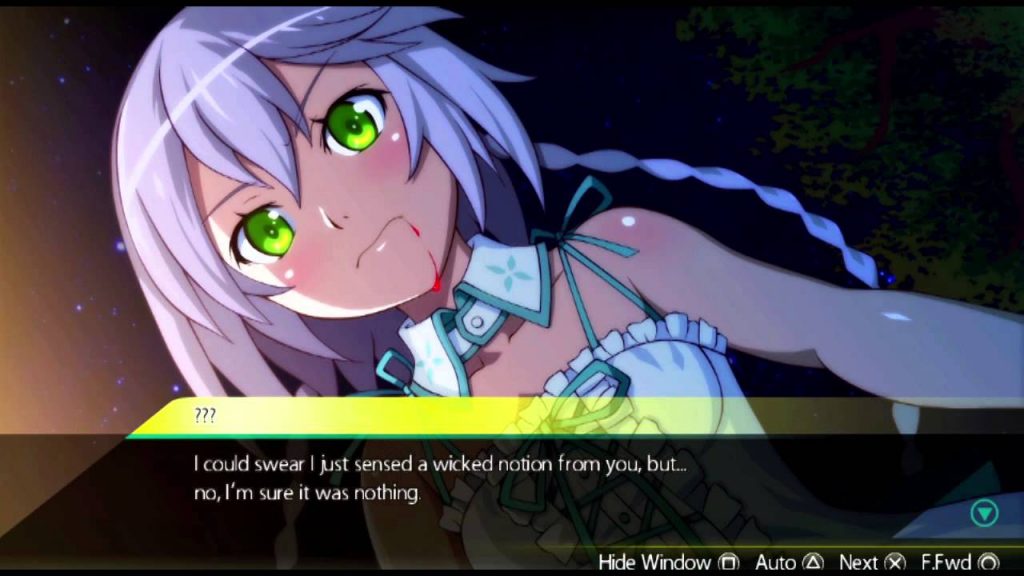
Although there are a large number of side-quests, the greater focus of the general game-world and your activities within it is shopping – according to the marketing, Akiba’s Trip contains over one-hundred and thirty real-life Akihabara shops. Needless to say, I had no interest in counting them myself. These shops are full of things to buy, from useful items such as stronger weapons and clothes to useless pop culture junk. There are also dozens of fliers to collect out on the streets, these being adverts for the real-life shops featured in the game. Thrilling stuff. This whole shopping / collector mentality is heavily emphasised by the game, because why spend time developing fun and polished gameplay when you can just cram your game with oh-so-hip otaku crap instead?
The flaws in Akiba’s Trip’s gameplay aren’t even glossed over with an impressive graphical veneer, as the visuals are extremely underwhelming: character models are very basic; streets feature little in the way of detail or visual atmosphere; shop exteriors are usually made up of flat surfaces with blurry, low-resolution textures pasted onto them; the few car models are blocky and have non-transparent windows, etc.
The poor quality of the graphics isn’t the only glaring problem you’ll swiftly come across on the game’s streets, as there are several other lazy and immersion-breaking flaws: a small number of character models means roaming NPCs are cloned far too often; there are some terrible invisible walls; and perhaps most egregious of all, the game-world (which isn’t especially large) is split up into a number of very small areas, all separated by loading screens. Although these loading screens are brief, this doesn’t excuse the fact that they appear with ridiculous frequency due to the structure of the game-world. On the whole, for a game that makes such a big deal of its digital recreation of a real-life location, ironically the game-world feels quite lifeless and fake.
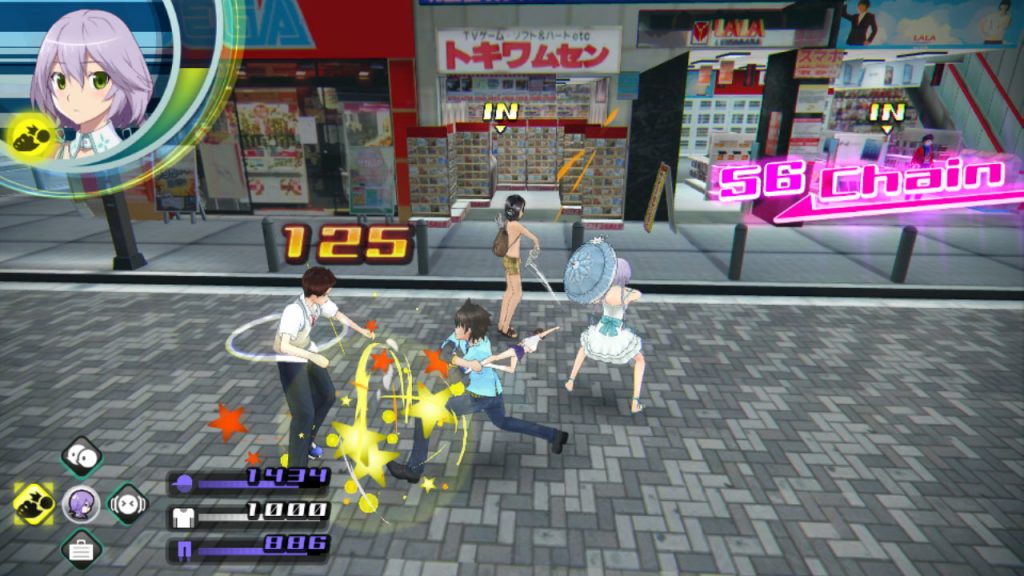
On the positive side, if the game does capture your attention then it certainly offers an impressive amount of content for you to dive into, from the aforementioned weapons, clothes and side-quests to non-gameplay-orientated content such as the e-mail inbox, encyclopaedia and Twitter-style social media (filled with the kind of vacuous drivel you so often find on social media in the real world) that you can access on the protagonist’s smartphone. Oh, and the phone also has a camera – it’s an anime-styled game in which there are frequently people in a state of undress, of course there’s a camera. If you can’t be bothered actually earning any of the useable in-game content then the game has you covered by allowing you to play through it in Toybox Mode, in which everything is already unlocked.
In terms of customisation, you can choose between Japanese or English text and voices, and there is also a visual editor tool that you can tinker with to change aspects of how the game looks. This tool is impressively thorough (said the actress to the bishop), allowing you to change the fog that hangs over Akihabara, character skin colour, sky colour, motion blur, bloom, etc. It won’t affect the gameplay but it’s another distraction for you to mess around with if you’re so inclined.
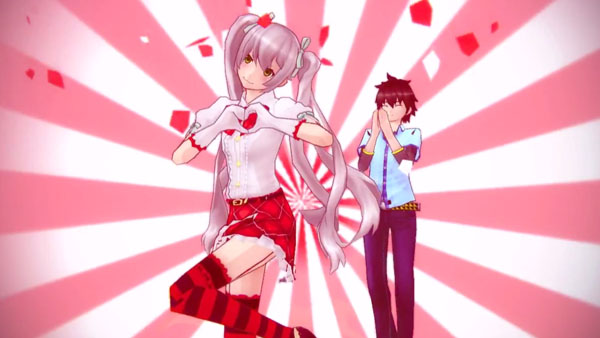
Akiba’s Trip: Undead & Undressed is obviously a game targeting a specific audience, and I think I’ve made it abundantly clear by now that I’m not a member of that audience. If you are and the game’s themes and style make you giddy with pleasure – and, importantly, you’re happy to ignore Akiba’s Trip’s faults as a videogame – then obviously feel free to ignore this review as chances are you’ll love it, and there’s certainly enough content to warrant your purchase.
But for me, Akiba’s Trip: Undead & Undressed is not only massively flawed as a videogame but so painfully, unbearably hip and self-satisfied with its representation of otaku culture that it makes me more inclined to commit seppuku than throw a peace-sign.
Rating – 3
Emily Medlock is an avid gamer whose passions not only include video games of all kinds, but anime, music, movies, and reading.

